Witnessing History
Marchers Arrive in Montgomery, Under Military Guard
Fred Stone was in college when he photographed the historic arrival of civil rights marchers in Montgomery, Alabama, in the spring of 1965. Now retired, he shared his photos with the California History Center at De Anza College. Historian David Howard-Pitney, a retired De Anza instructor, wrote the accompanying essay.
In the two weeks after Bloody Sunday, some favorable developments arose for the Selma movement.
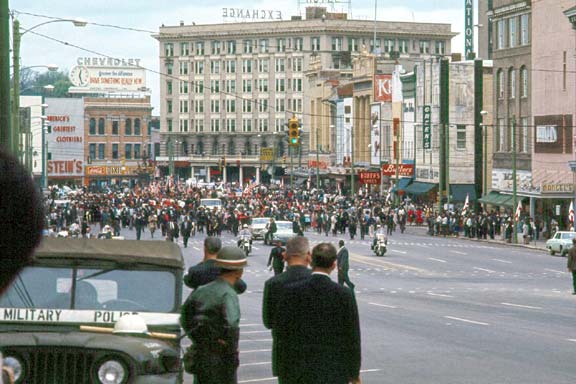
Marchers become visible. (Fred Stone)
On March 15, in an address to a joint session of Congress, President Lyndon Johnson called for a federal voting rights law. In his speech, President Johnson praised the Selma protestors, embraced their cause, and ended by promising emphatically: “And we shall overcome.” He submitted a voting rights bill to Congress two days later. Then on March 16, a federal court approved the civil rights groups' planned Selma to Montgomery March, enjoining Gov. George Wallace and local police from harassing or impeding them.
When assembled marchers crossed the bridge out of Selma and began their five-day trek to Montgomery, they were feeling jubilant. All the way, U.S. Army and National Guard troops were omnipresent, to protect and monitor the march.
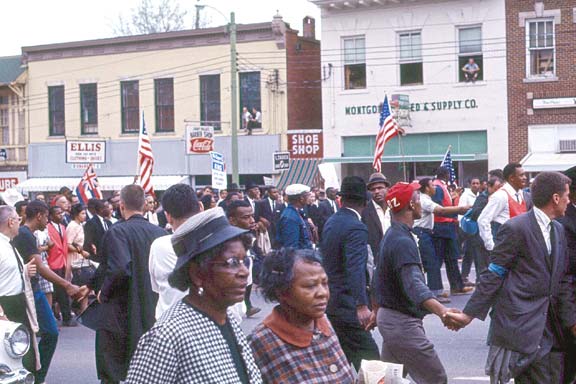
Marchers proceed toward Capitol. (Fred Stone)
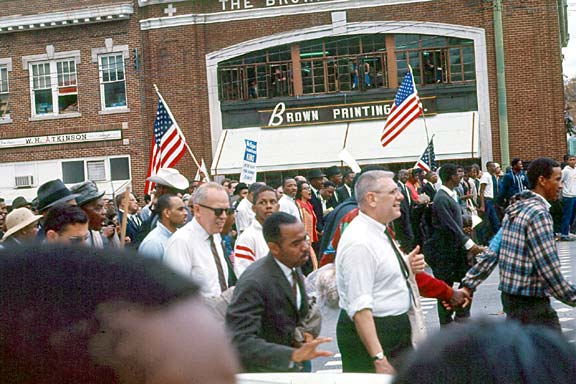
Marchers hold hands, carry flags. (Fred Stone)
So it was a triumphant morning when marchers, many with their injuries from Bloody Sunday still visible, reached downtown Montgomery.
When they turned onto Dexter Avenue, the long avenue before the state legislature and governor’s office, Fred Stone was there taking pictures to document the historic day.
Stone moved along as they walked up Dexter Avenue and was there, too, at the steps of the Capitol where various civil rights leaders and dignitaries spoke.
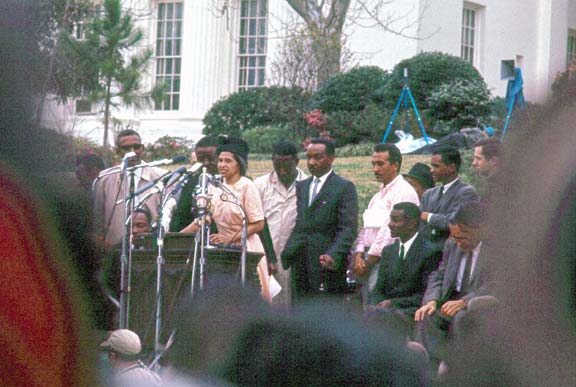
Civil rights icon Rosa Parks addresses the marchers. (Fred Stone)
That included John Lewis, who was uncharacteristically wearing a hat – probably to cover the bandages on his recent head wounds.
Mindful of his limited film supply, Stone took pictures judiciously and sparingly.
No state official came out to meet them – although periodically through the day, Gov. Wallace peeked nervously through his window blinds to catch glimpses of the crowd.
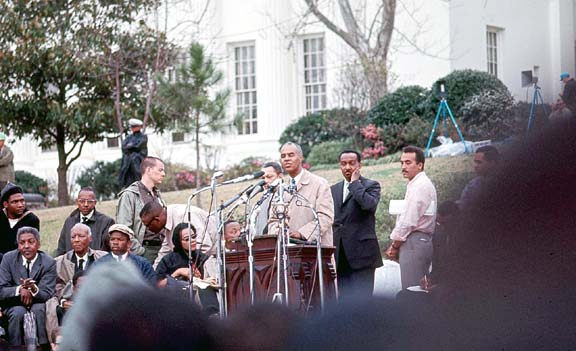
Bayard Rustin, A. Phillip Randolph, John L. Lewis (wearing white hat), Coretta Scott King and Martin Luther King Jr. sit next to podium as Roy Wilkins speaks; Ralph Abernathy (in dark suit) stands. (Fred Stone)
Soon, Martin Luther King Jr. would give his “Our God is Marching On” oration to conclude the Selma campaign:
"I come to say to you this afternoon, however difficult the moment, however frustrating the hour, it will not be long ...
"How long? Not long, because the arc of the moral universe is long, but it bends toward justice."

Martin Luther King Jr. speaks at podium. (Fred Stone)
After that closing address, Stone and his buddies headed back to his strategically parked VW Beetle, to beat the departing traffic and return home.
This story is told in five parts:
- Part 1: Marching for Justice
- Part 2: Bloody Sunday
- Part 3: Arriving in Montgomery
- Part 4: The Voting Rights Act
- Part 5: Freedom Is Never Free

